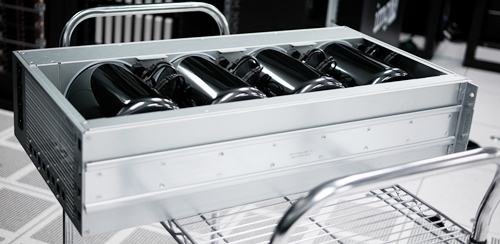– Contributed content –
18 May 2018. Getting a new drug to market and in hospitals is always a long process. With loads of red tape to keep people safe, along with huge costs involved, companies who want to make this sort of product have to work hard to do it. In recent years, though, technology has offered hope for change in this industry. Being able to remove animals and people from the testing process can make it all much easier, while also limiting the risks to those involved. To give you an understanding of how this may come to pass, this post will be exploring the field of digital medicine, and what might happen over the next few years.
The current routine
Before going into what might replace current methods, though, it will be worth thinking about the route which leads to them. Even for researchers, the first stage in a job like this will always involve some planning. Each milestone will have to be recorded, giving you an idea of what has been done, along with the jobs which are coming down the line. There is loads of theory involved with this process, and this is where this will be tested. In some cases, medicines won’t make it past this sort of stage.
In a lot of instances, it will be impossible to see anything wrong with the drugs being tested, and they will make it onto the animal part of this process. Beginning with mice and rats can provide a great way to tell whether or not something is deadly. Moving on from these little critters will take a long time, with loads of tests being performed, and their lives being altered forever. As time goes on, some companies will start to use larger animals which are closely related to humans. Pigs can be one of the very best replacements for people in this process.
Of course, once the drugs have been deemed safe for humans to test, they will be upgraded to a round of trials with actual people. In a lot of cases, subjects will sign up for this sort of testing in return for financing, making it fair for everyone involved. This work has to be done very extensively during a drug’s testing process. It can take many years, using huge amounts of resources, but can save lives once it is complete. Of course, though, a lot of people will want their treatments to be on the market for a while before they start using them.
The hope for the future
Using animals for this sort of testing hardly seems fair, as it often results in their lives being artificially shortened, and makes their time alive very unpleasant. Along with this, getting humans involved before simulations have been run feels very risky. This is why a lot of medical organizations are looking towards machines to solve this problem. Like something out of the sci-fi film, there are loads of researchers working on modeling the human body, but this sort of task takes a very long time, and it will be a while before it is ready for use.
Once it is, though, the world of medical research will change forever. Instead of having to use animals in this process, a simulation of the human body will be created and used to monitor the effects of a drug or treatment on a fake person. With a degree of accuracy greater than using other mammals, this will not only make it all fairer, but will also boost the quality of diagnostics in the field. Of course, though, making this sort of approach work out isn’t always easy.
The problems at play
There are loads of problems with this sort of approach to testing, and it can be a challenge to find ways to overcome them without huge amounts of resources. To begin, as one of the biggest issues, this sort of application requires vast amounts of computing power. With supercomputers and other server systems being the only machines able to provide this, researchers will often have to pay other companies to run their research. While making things expensive, this can also create large delays, and this is very bad when the whole project has a time limit set on it.
It usually takes many years for a drug to make it to market using the current system. As a big part of this, researchers are trying to make sure that there aren’t any side effects of their treatments which will begin to show in the future. A minor mistake in the programming of an automated human could spell trouble for a lot of people in years to come. It is very unlikely that this sort of error would be made, and there will almost always be the resources to repair and rectify the information, but it is still worth keeping in mind before you get started.
Finally, as one of the biggest challenges for the developers of these systems, they have to spend a huge amount of time testing the fake human itself. The success of a simulated test will only be possible if the software is able to back it up. Using Agile testing for exploratory testing, these companies will give themselves the chance to test the full range of features on offer, ensuring that nothing is failing. To make sure that the data being collected has built a realistic picture of a human, reactions to existing chemicals will be used to make sure it is all safe.
Hopefully, this post will inspire you to start looking into the future of medical research. With this part of the technological world starting to become important, it is a great time to get in the know. As a big part of this, it is worth taking a look at the tools being used today. Modeling already plays a large role in the process of making medicine, even if it isn’t the only step in the process, and this makes it particularly interesting to those in the field.
* * *



 RSS - Posts
RSS - Posts
You must be logged in to post a comment.